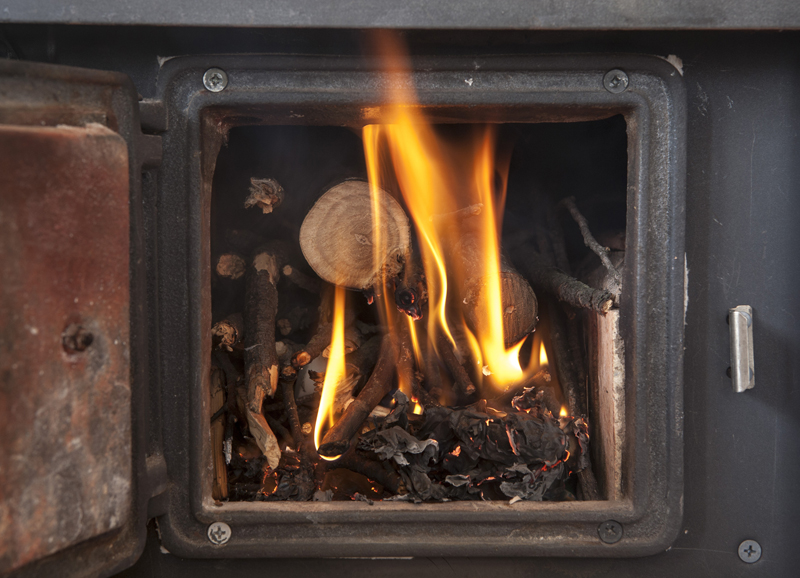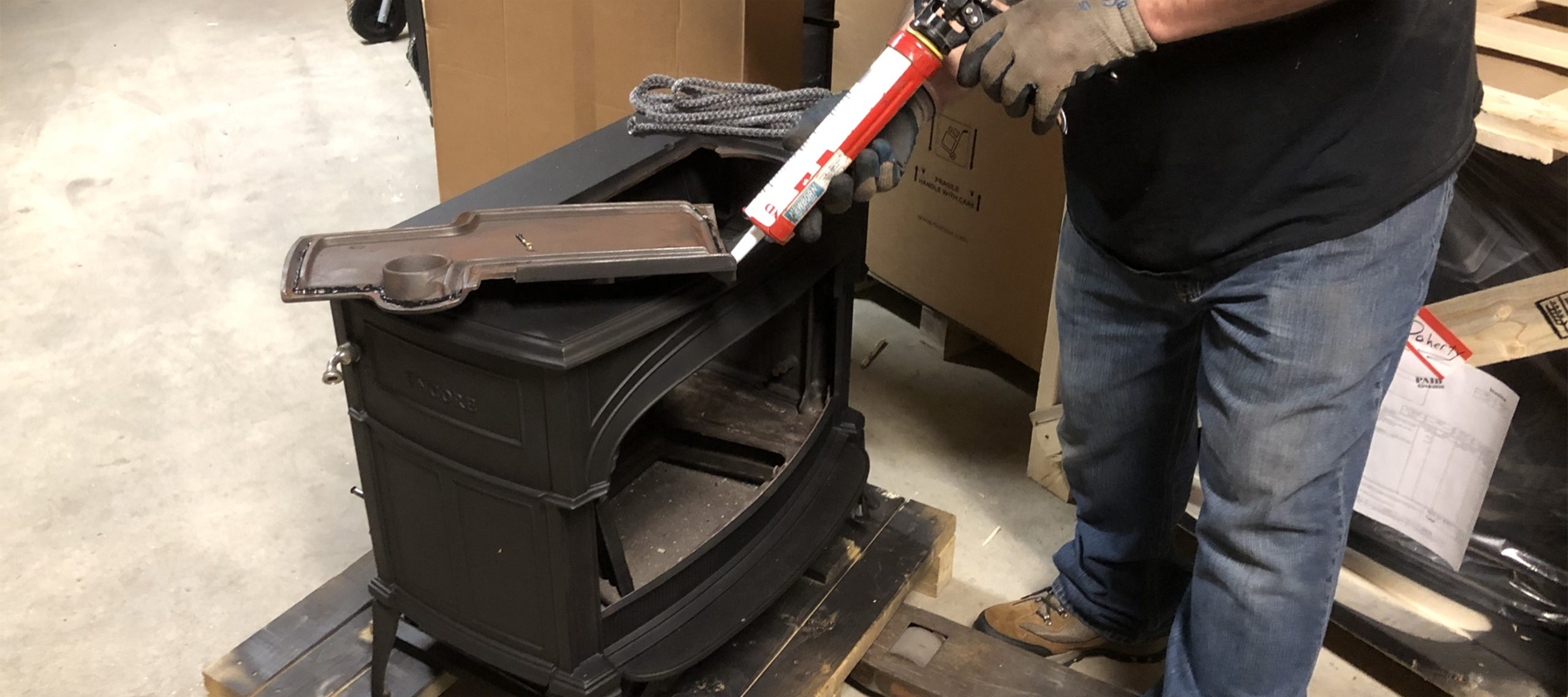Cost Guide: Keep Your Wood Stove Running Safely With Proper Repairs
Last Updated: December 14, 2023

Fact Checked By: Ryan Maguire
On This Page
Whether you burn wood as a primary or secondary home heating source, it's vital to stay on top of routine maintenance and repairs.
Failure to do so could result in hazardous conditions and significantly reduced energy efficiency. An annual chimney service and inspection prior to the burning season should turn up any problems.
Other signs that a repair is needed include smoke coming into the house, a leaking chimney, or chimney damage.
How Much Does Wood Stove Repair Cost? #
Like any heating appliance, wood stoves can run into issues that require professional repairs. Here is what basic wood stove repairs typically cost:
Annual Inspection & Cleaning
- $100 to $250 per year
Minor Repairs
- Gasket replacement: $75 to $200
- Glass replacement: $150 to $300
- Brick replacement: $300 to $550
Major Repairs
- Replace catalytic combustor: $350 to $600
- Replace baffle system: $500 to $800
- Full wood stove replacement: $1,800 to $3,000
Call Out Fee
- $75 to $150 per hour
Homeowners pay an average of $150 to $500 for most wood stove repairs. Replacing an entire unit starts around $1,800. The chimney and venting system can also incur repair costs if they become damaged.
Annual cleaning and inspections help prevent issues and keep your stove running safely and efficiently.

Real-World Wood Stove Repair Costs #
Here are some real-world quotes from homeowners on how much they paid to have their wood stoves repaired:
"I had the door gasket replaced on my wood stove since it was allowing smoke to leak out. The gasket repair cost $185." - James T., New Hampshire
"The local chimney service charged me $225 for a full cleaning and inspection each year. This helps prevent bigger issues." - Anne B., Maine
"Paid a technician $425 to replace cracked firebricks and a warped baffle plate in my wood stove." - Kevin R., Oregon
"The sweep company installed a new catalytic combustor and replaced the door glass for $515 total." - Elizabeth P., Michigan
"I decided to just invest in a brand new wood stove unit when mine started rusting out after 7 years. The new stove with installation & hearth pad cost $2,300." - Reggie D., Pennsylvania
As you see, basic maintenance like gasket replacement may cost $185 while replacing multiple components like firebricks and baffles may run $425+. More extensive repairs or full wood stove replacement ranges from $2,300 on average.
Common Woodstove Problems #
Here are some of the most common wood stove problems homeowners experience:
Not Producing Enough Heat
- Caused by improper wood selection (wet wood), closed air vents, cracked firebrick, or a malfunctioning baffle system.
Smoking From the Stove
- Generally happens due to insufficient draft from a weak chimney draw, blocked chimney, or air leaks around door gaskets.
Creosote Buildup
- Burning wet wood or not operating at hot enough fires leads to creosote residue, which can cause dangerous chimney fires.
Crumbling Firebricks
- Heat and moisture damage the brick over time. Cracks allow air loss and reduce efficiency.
Glass Door Sooting Up
- Typically from burning poor wood (pine sap, etc), a malfunctioning air wash system, or failed door gasket seals.
Rust Accumulation
- Water leaks and condensation can lead to premature metal corrosion and decay.
Faulty Damper
- A faulty damper (the damper controls air flow in and out of the chimney) can let cold air in and heated or conditioned air out. Replace a worn or outdated damper with a newer unit for a tighter seal and better energy efficiency.
Loose Loading Door
- A loose woodstove loading door results in heat loss. Replacing the door gasket (seal) often solves this problem.
Catching problems early by hiring a certified sweep for annual cleanings can help minimize expensive repairs and keep your wood stove running safely for years. Burning only seasoned firewood is also key.
Chimney Cleaning #
The general rule of thumb for chimney sweeping is once per year. The best time to schedule a cleaning is the off-season (from April to September), when prices are lower.
Depending on the quality of the fire, the condition of the wood, and how often you use the unit, however, an annual cleaning may not be necessary. The main reason for a cleaning is to remove creosote, a buildup produced by wood combustion. Creosote accumulates more rapidly when the wood is wet or unseasoned, while a hot, clean-burning produces less creosote.
If you're feeling ambitious, you can strap on some goggles and a dust mask and check creosote levels by scratching the chimney area above the damper. 1/8 inch of creosote indicates a cleaning is required; ¼ means you're at serious risk for a chimney fire and need to hire a chimney sweep ASAP.
To be on the safe side, an annual cleaning is recommended. Even if your chimney only has moderate creosote buildup, a cleaning service almost always includes an inspection. Spotting and correcting a problem early on can spare you the expense of an emergency service down the road.
Can a Faulty Wood Stove Cause Carbon Monoxide Problems? #
Yes, absolutely. An improperly functioning wood stove that is releasing smoke or fumes into the home is one of the most common causes of dangerous carbon monoxide (CO) leaks and poisoning.
Some of the key wood stove issues that can create carbon monoxide hazards include:
- Cracked or damaged firebricks - Allow exhaust to leak into home
- Warped baffle plates - Redirect smoke inward
- Gasket leaks - Let smoke escape around door frames
- Chimney blockages - Force smoke backward
- Improper venting - Trap fumes in living spaces
A malfunctioning wood stove will often exhibit symptoms like soot buildup inside, smoke smells, or visible escaping smoke. But carbon monoxide is an invisible, odorless gas that can quickly accumulate to lethal levels without any sensory warnings.
Having CO detectors throughout the home is crucial. Address any potential wood stove issues immediately to stay safe. Ignoring problems dramatically escalates the risks of CO poisoning.
